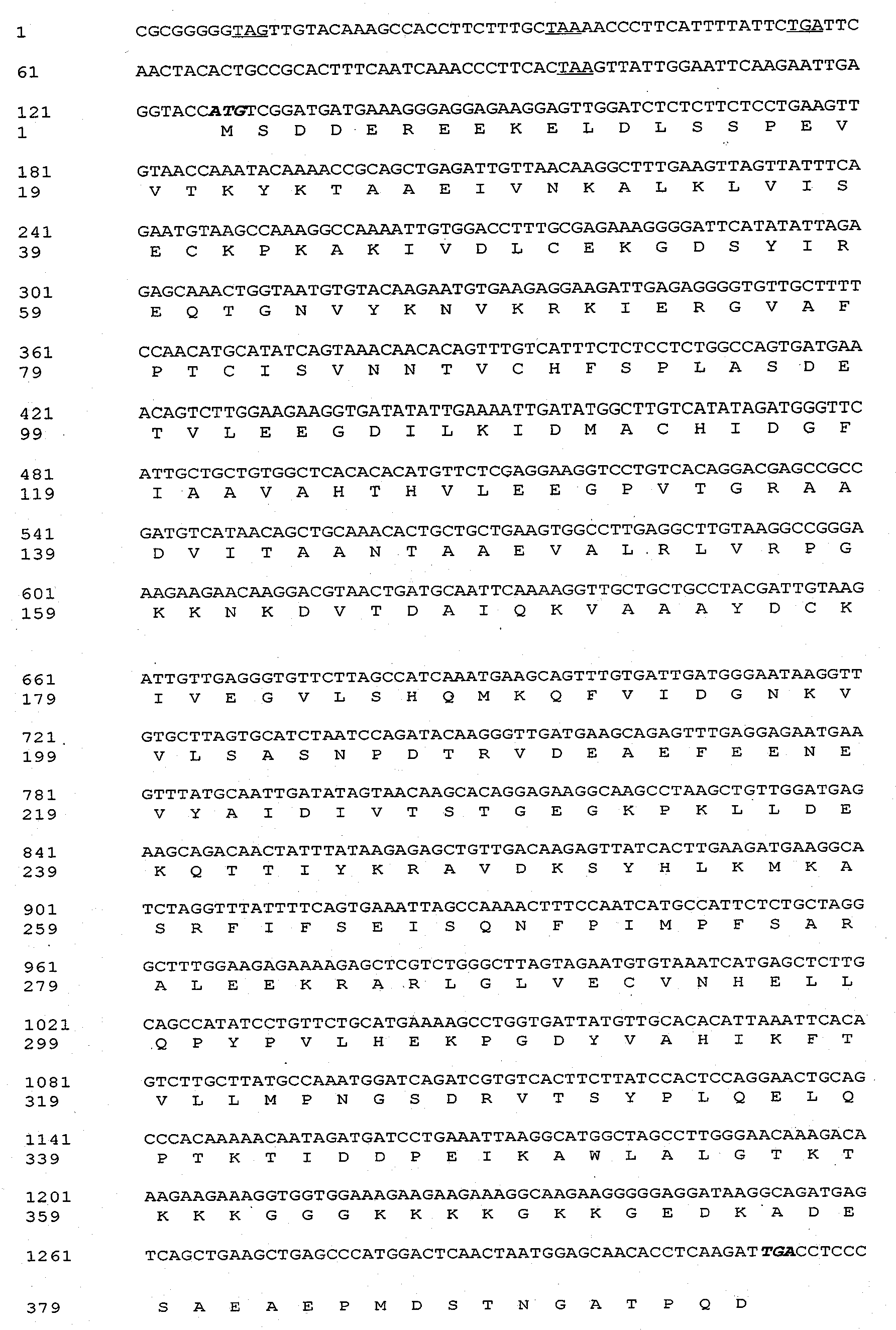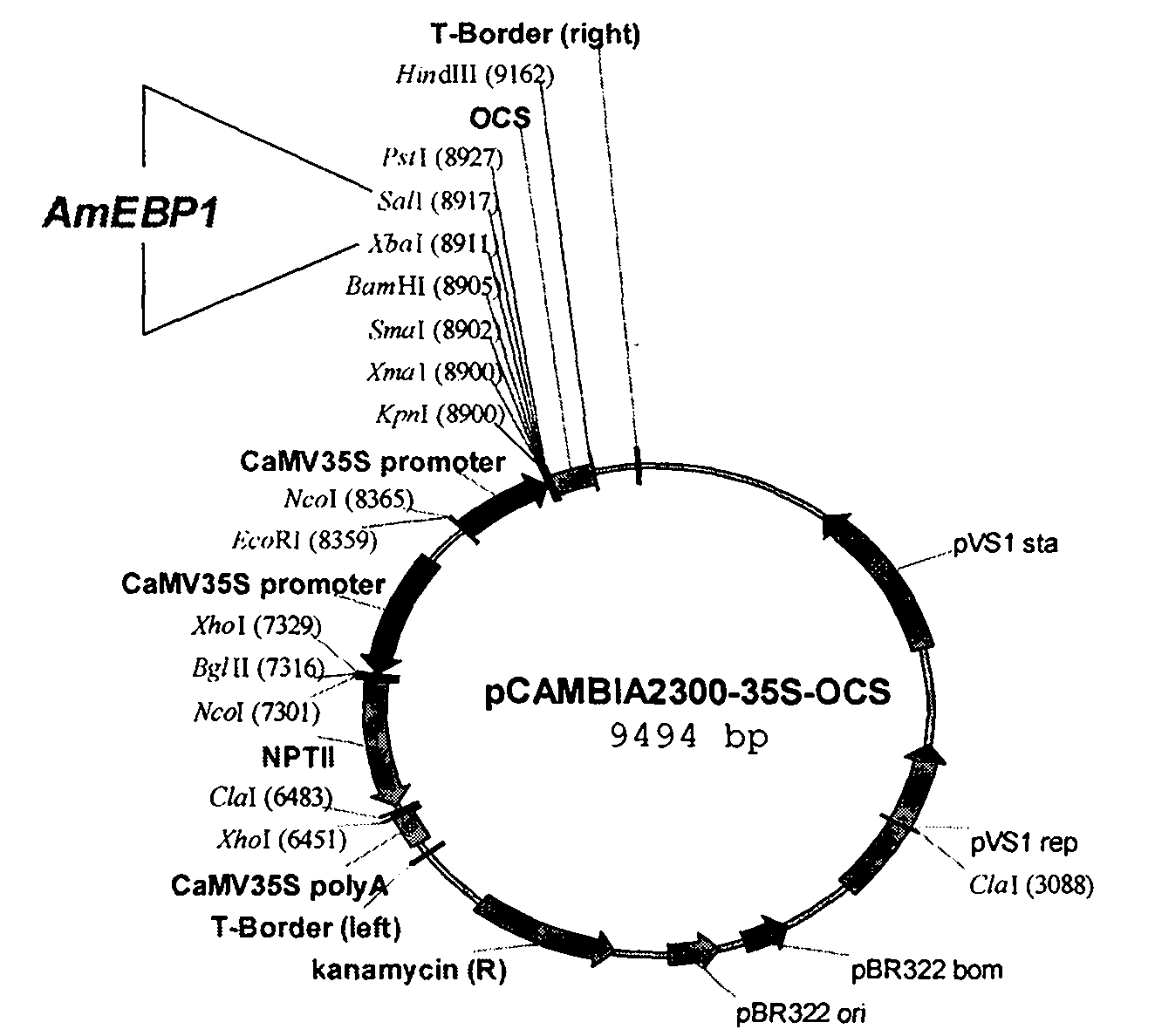Ammopiptanthus mongolicus cold-resistant gene AmEBP1
A technology of holly and gene, which is applied in the field of cold-resistant gene AmEBP1 of holly, which can solve the problems of cold-resistant gene cloning and transformation that have not been reported successfully.
- Summary
- Abstract
- Description
- Claims
- Application Information
AI Technical Summary
Problems solved by technology
Method used
Image
Examples
Embodiment Construction
[0010] (1) The in vitro regeneration system of woody plants is used as the transformation material, and genetic transformation is carried out by means of Agrobacterium dipping, pollen tube passage, gene gun and other methods.
[0011] (2) Conversion operation steps
[0012] 1. Agrobacterium transformation method
[0013] (1) The AmEBP1 gene expression vector was transformed into Agrobacterium tumefaciens LBA4404 by the three-parent hybridization method, and used as Agrobacterium infecting transformed plants.
[0014] (2) Bacterial liquid preparation
[0015] 1) Use an inoculation loop to scrape the surface of the frozen culture of Agrobacterium strains containing recombinant plasmids, streak on the above-mentioned YEP plate containing the corresponding antibiotics, and place it in a constant temperature incubator at 28°C for 2 days, until colonies grow out on the plate It can be used for liquid culture. Plates with colonies were stored in a 4°C refrigerator. After one mont...
PUM
 Login to View More
Login to View More Abstract
Description
Claims
Application Information
 Login to View More
Login to View More - R&D
- Intellectual Property
- Life Sciences
- Materials
- Tech Scout
- Unparalleled Data Quality
- Higher Quality Content
- 60% Fewer Hallucinations
Browse by: Latest US Patents, China's latest patents, Technical Efficacy Thesaurus, Application Domain, Technology Topic, Popular Technical Reports.
© 2025 PatSnap. All rights reserved.Legal|Privacy policy|Modern Slavery Act Transparency Statement|Sitemap|About US| Contact US: help@patsnap.com



